
Wind Tunnel Models - Click on any picture to enlarge it Modelli per la Galleria del Vento - Click su qualsiasi immagine per ingrandirla |
||
Even though during the development of the Goblin many different tail configurations were tested, I couldn't find any official document describing a simple V-Tail such as the one embodied in this model (the description of whose restoration can be found here https://aeroexperience.blogspot.com/2013/09/mcdonnell-aircraft-xf-85-goblin-wind.html) - I cannot provide any further detail, but definitely this was an actual aerodinamic test item (to enlarge these three pictures, right click and "open image in a new tab"). |
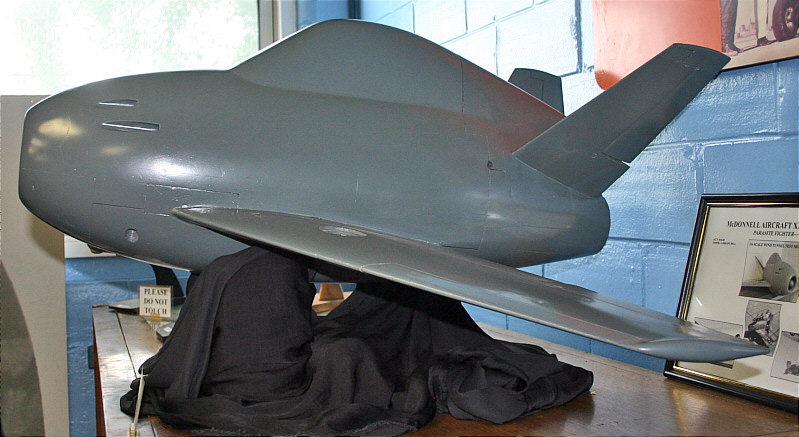 |
Benché nel corso dello sviluppo del Goblin si siano provate molte differenti configurazioni della coda, non sono stato in grado di trovare alcun documento ufficiale che descriva una semplice coda a V come quella rappresentata in questo modello (la descrizione del cui restauro è reperibile qui https://aeroexperience.blogspot.com/2013/09/mcdonnell-aircraft-xf-85-goblin-wind.html) - non posso fornire nessun ulteriore dettaglio, ma in definitiva questo fu effettivamente un modello per test aerodinamici (per ingrandire queste tre immagini, click destro e "apri l'immagine in un nuovo tab"). |
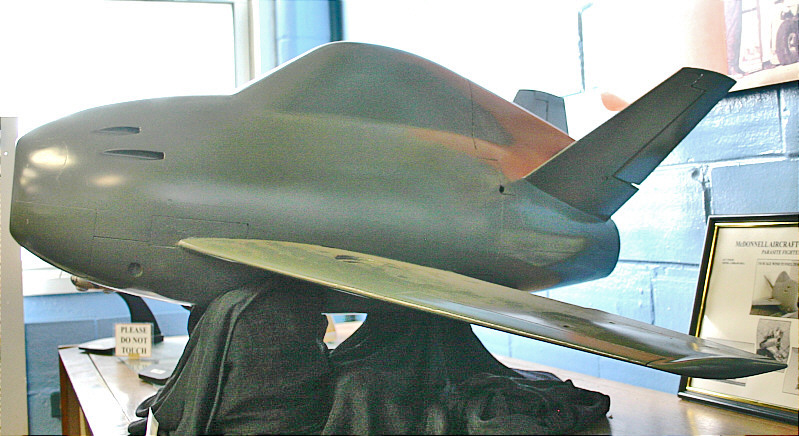 |
||
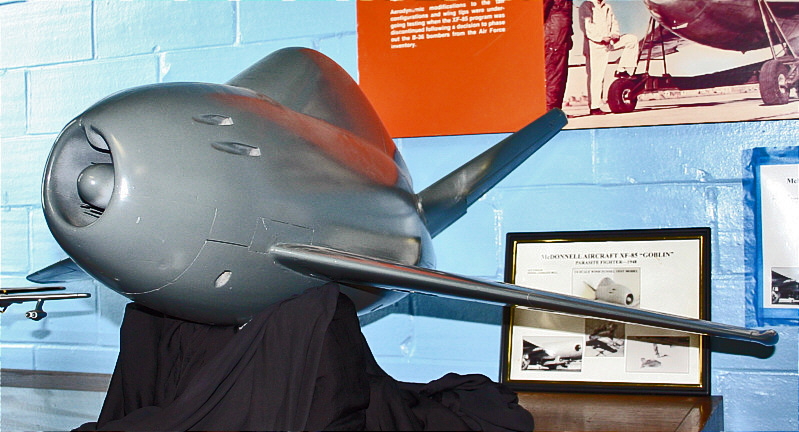 |
||
Beginning of 1947 - The model marked "208" used in the tests described in the NACA RESEARCH MEMORANDUM L7C10 - FREE-SPINNING AND TUMBLING TEST OF A 1/16 SCALE MODEL OF THE MCDONNELL XP-85 AIRPLANE (see here) |
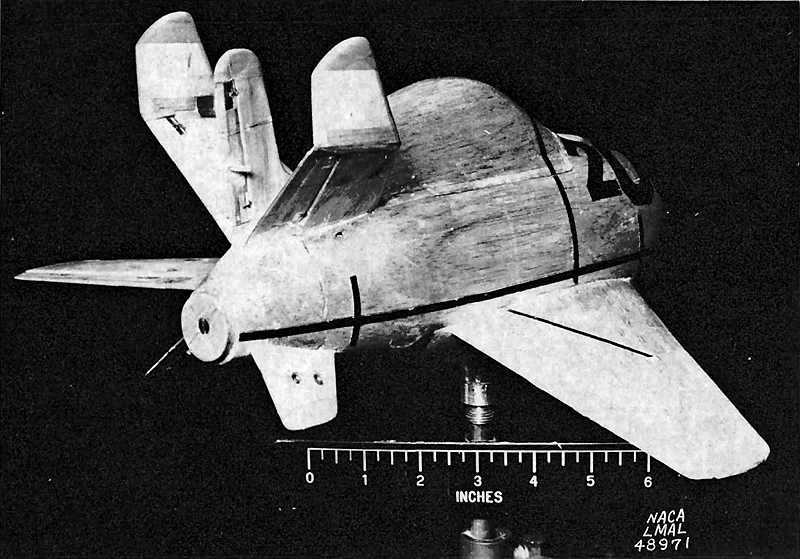 |
Inizio del 1947 - Il modello marcato "208" usato nei test descritti nel NACA RESEARCH MEMORANDUM L7C10 - TEST DI AVVITAMENTO LIBERO E CAPITOMBOLAMENTO DI UN MODELLO IN SCALA 1/16 DELL'AEREOPLANO MCDONNELL XP-85 (vedere qui) |
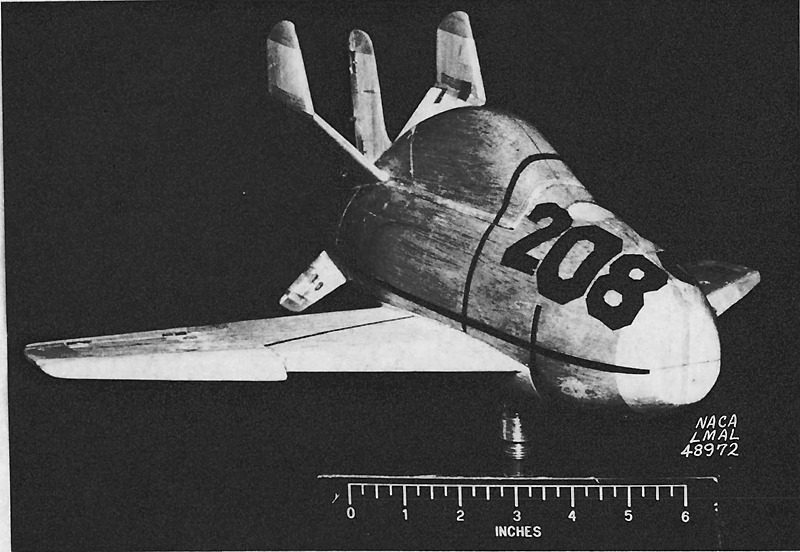 |
||
Beginning of 1947 , Langley 20-foot free spinning tunnel - free spinning and tumbling tests of the "208" model |
 |
Inizio del 1947, tunnel da 20 piedi per avvitamento libero di Langley - test di avvitamento libero e capitombolamento del modello "208" |
Beginning of 1947, the 1/5 scale model used - among others - for the tests of low speed stability and control described in the NACA RESEARCH MEMORANDUM SL7C27 (see here) |
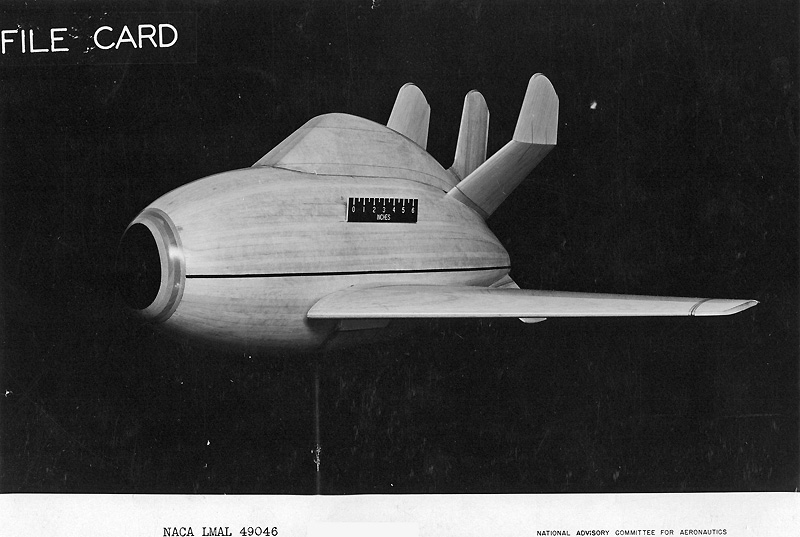 |
Inizio del 1947, il modello in scala 1/5 usato - tra l'altro - per i test di stabilità e controllo alle basse velocità descritti nel NACA RESEARCH MEMORANDUM SL7C27 (vedere qui). |
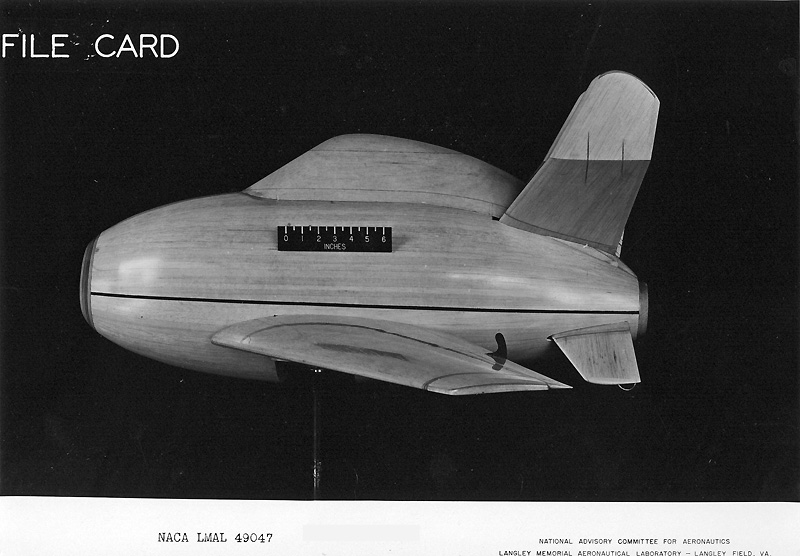 |
||
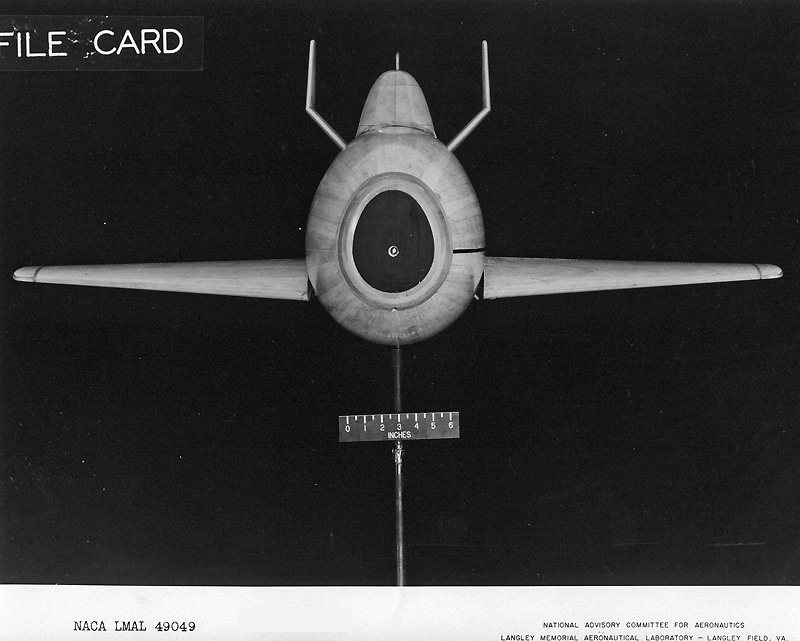 |
||
Late 1947 - The 1/16 scale model, fitted with a conventional tail, used in the tests described in the NACA RESEARCH MEMORANDUM SL7I11 (see here). |
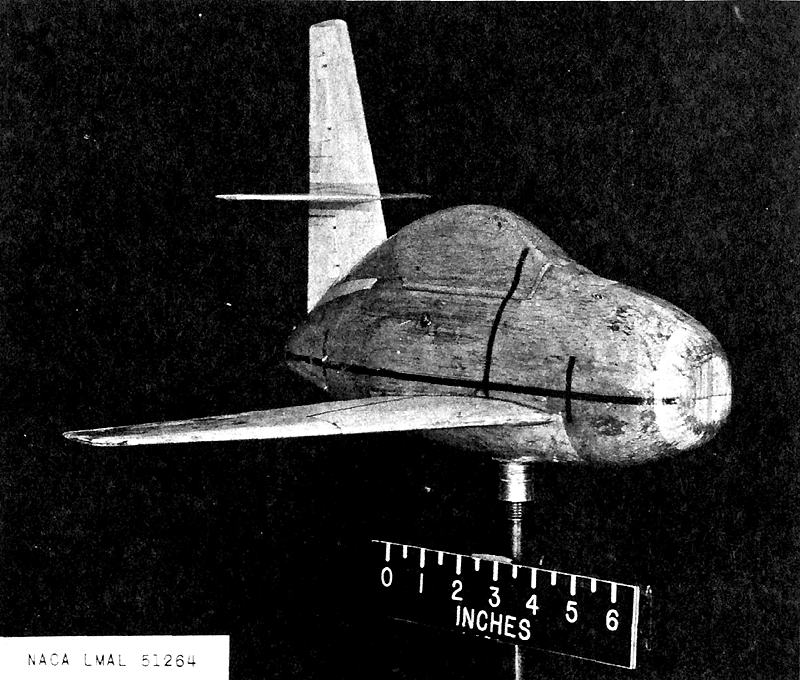 |
1947 inoltrato - Il modello in scala 1/16, dotato di impennaggi convenzionali, usato nei test descritti nel NACA RESEARCH MEMORANDUM SL7I11 (vedere qui). |
Late 1947 - The free spin tests described in the NACA RESEARCH MEMORANDUM SL7I11 (see here). |
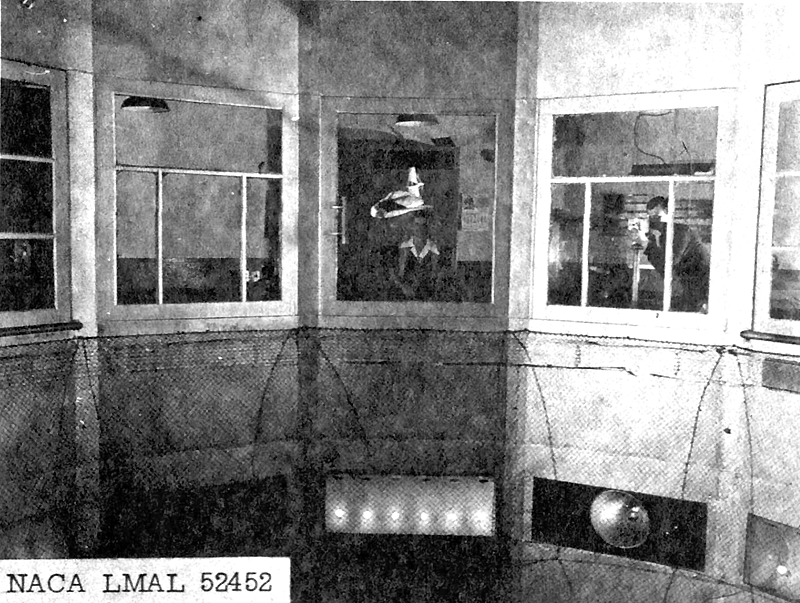 |
1947 inoltrato - I test di avvitamento libero descritti nel NACA RESEARCH MEMORANDUM SL7I11 (vedere qui). |
November 1947, the 1/10 scale model used for the aerodynamic tests of the trapeze/parasite figjhter pair described in the NACA RESEARCH MEMORANDUM SL7J16 (see here). Pictures sourced from https://crgis.ndc.nasa.gov/historic/12-Foot_LST_Test_Log |
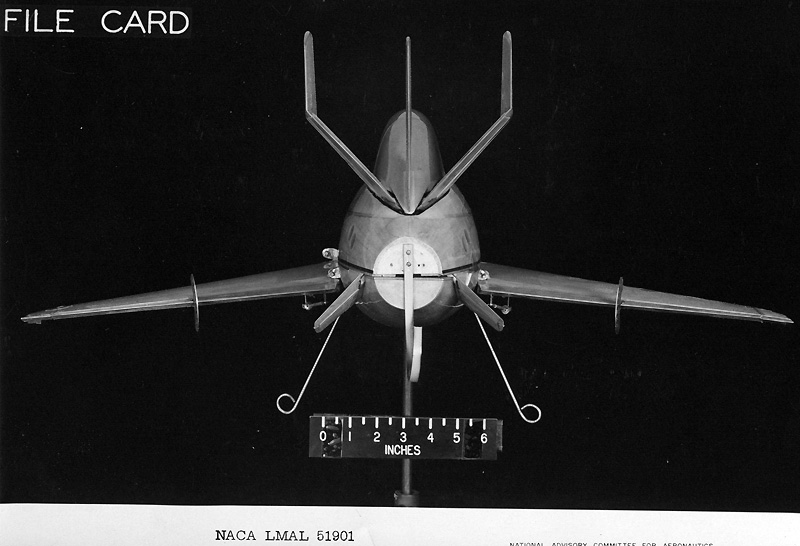 |
Novembre 1947, il modello in scala 1/10 usato per i test aerodinamici della coppia trapezio/caccia parassita descritti nel NACA RESEARCH MEMORANDUM SL7J16 (vedere qui). Immagini tratte da https://crgis.ndc.nasa.gov/historic/12-Foot_LST_Test_Log |
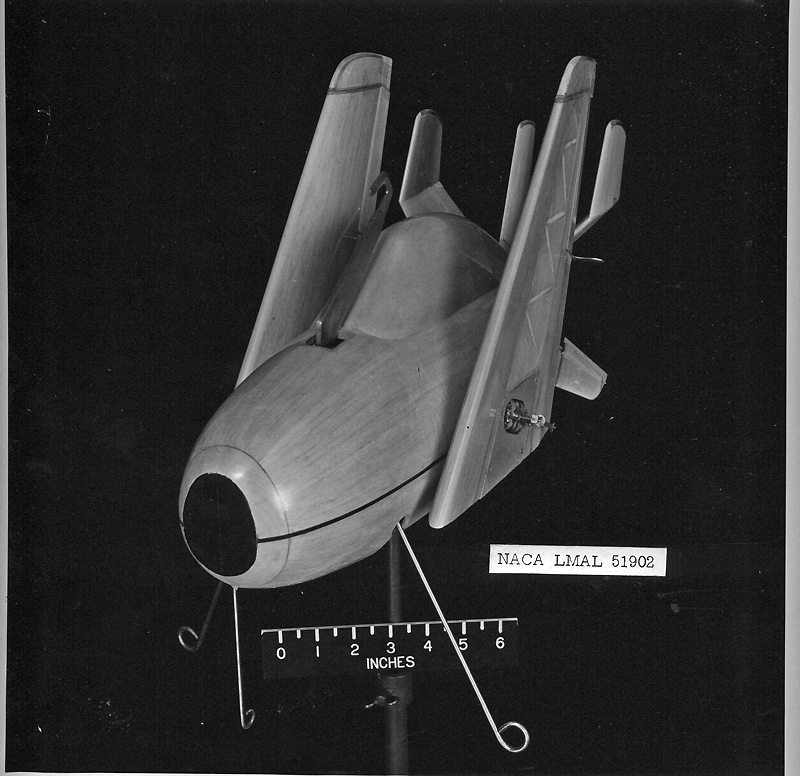 |
||
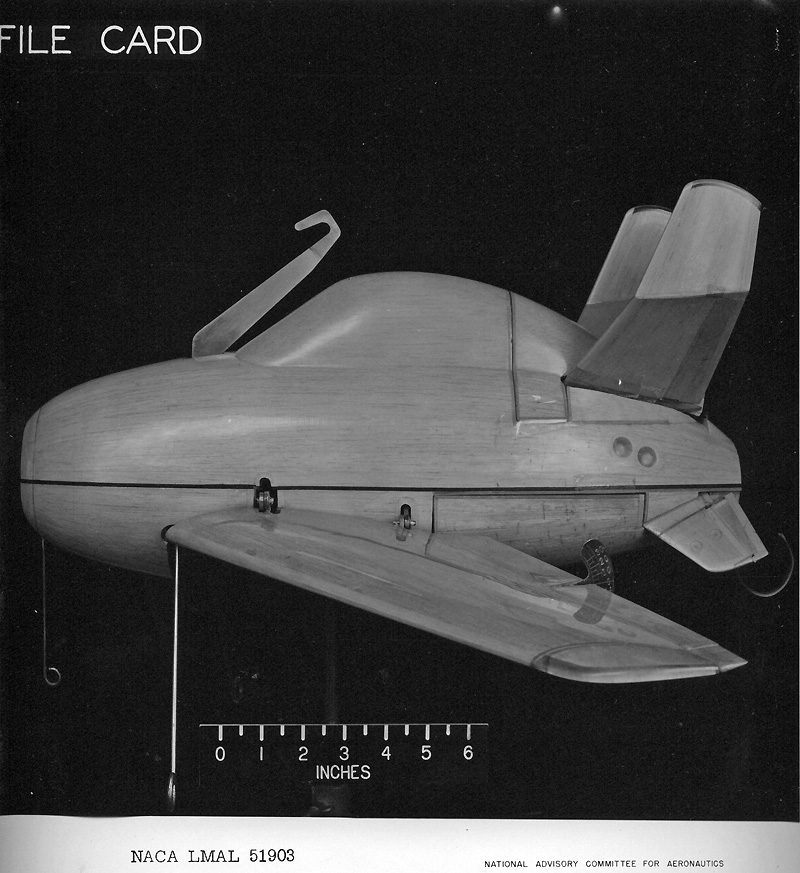 |
||
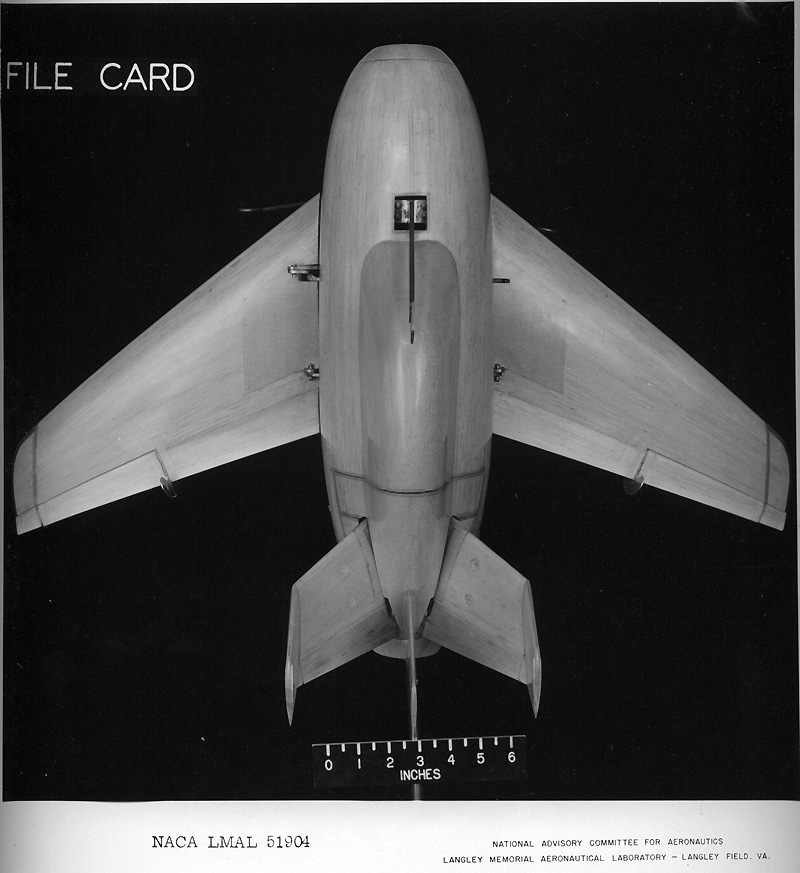 |
||
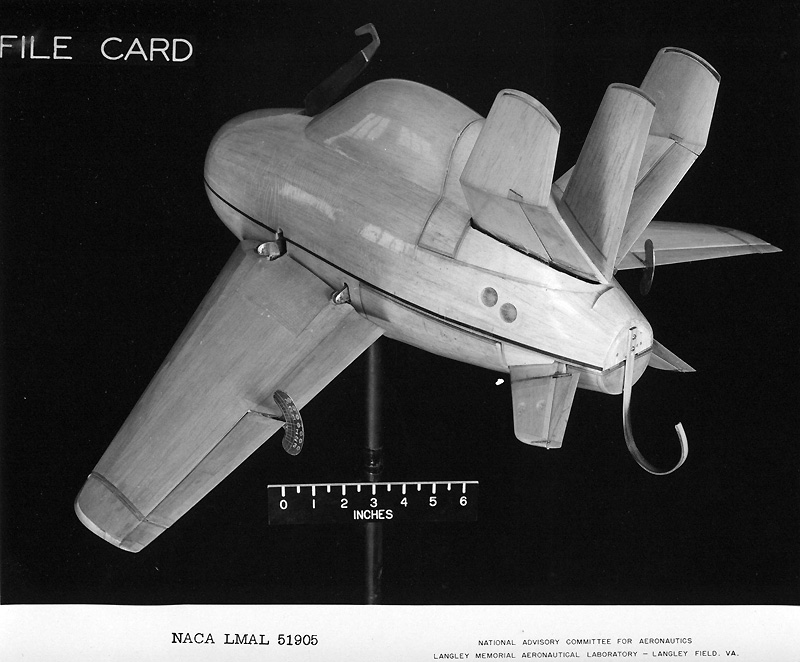 |
||
 |
||
 |
||
The model above being tested while attached to the trapeze, in late 1947 in the Langley 30 foot free flight tunnel. The NACA RESEARCH MEMORANDUM SL7J16 (see here) includes tens of pictures. Not easily seen is the retention collar that could be lowered on the model nose to simulate the corresponding part in the actual trapeze. The model fighter could fold the wings during retraction. The bomb bay and the trapeze are fixed vertically on the walls of the wind tunnel. |
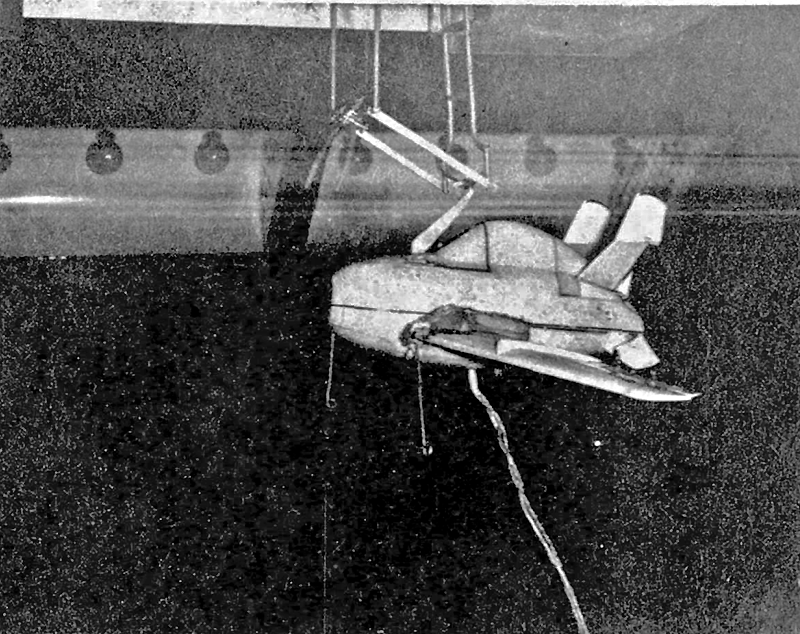 |
Il modello sopra durante i test mentre è connesso al trapezio, alla fine del 1947 nel tunnel a volo libero da 30 piedi a Langley. Il NACA RESEARCH MEMORANDUM SL7J16 (vedere qui) comprende decine di immagini. Non ben visibile, il giogo di ritenzione che poteva essere abbassato sul muso del modello per simulare la corrispettiva parte del vero trapezio. Il modello del caccia poteva ripiegare le ali durante la retrazione. La stiva bombe e il trapezio sono fissati verticalmente sulle pareti della galleria del vento. |
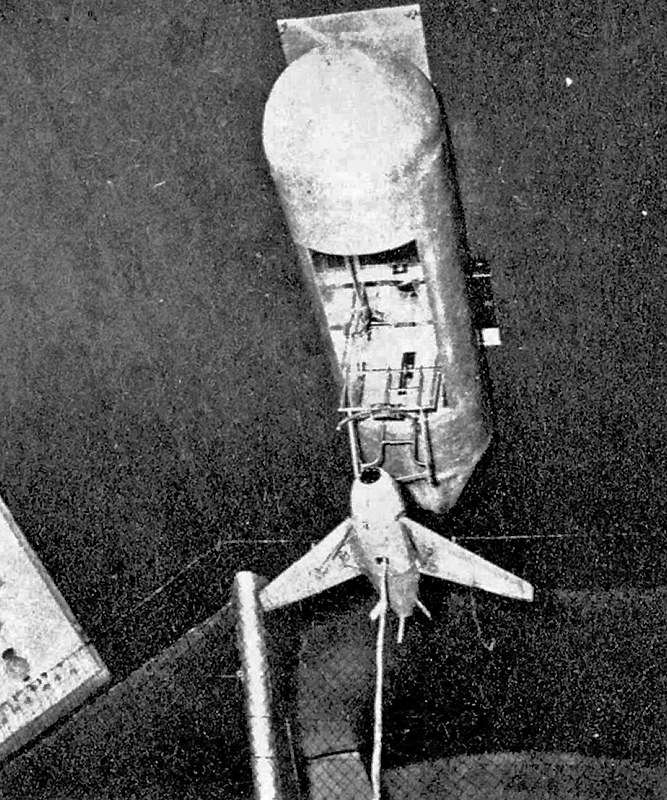 |
||
❦